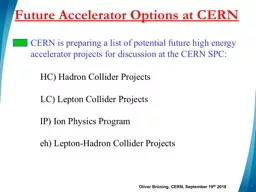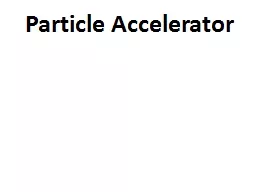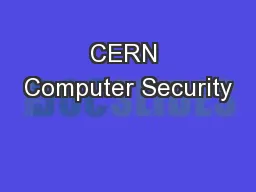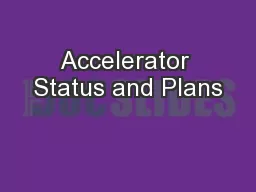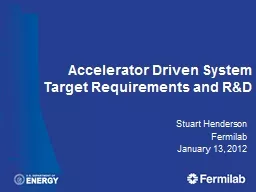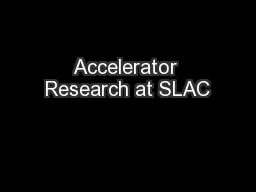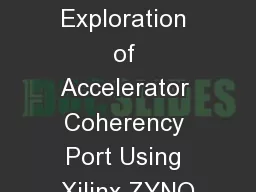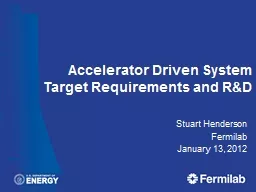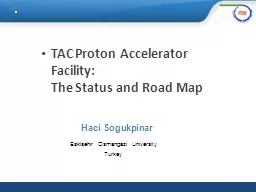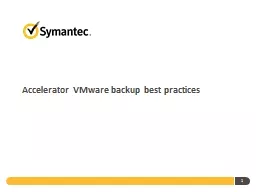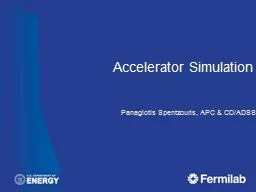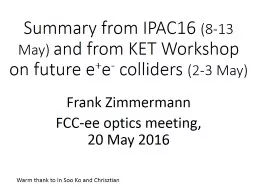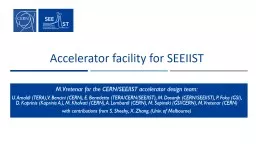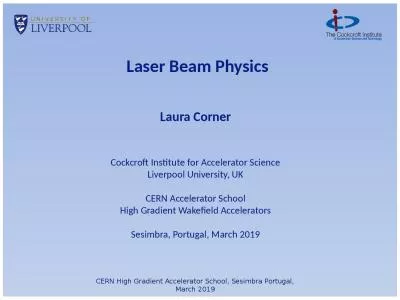PPT-Future Accelerator Options at CERN
Author : classyshadow | Published Date : 2020-06-15
1 CERN is preparing a list of potential future high energy accelerator projects for discussion at the CERN SPC HC Hadron Collider Projects LC Lepton Collider Projects
Presentation Embed Code
Download Presentation
Download Presentation The PPT/PDF document "Future Accelerator Options at CERN" is the property of its rightful owner. Permission is granted to download and print the materials on this website for personal, non-commercial use only, and to display it on your personal computer provided you do not modify the materials and that you retain all copyright notices contained in the materials. By downloading content from our website, you accept the terms of this agreement.
Future Accelerator Options at CERN: Transcript
Download Rules Of Document
"Future Accelerator Options at CERN"The content belongs to its owner. You may download and print it for personal use, without modification, and keep all copyright notices. By downloading, you agree to these terms.
Related Documents

